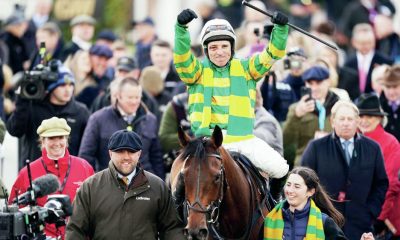
The two major types of horse racing meetings are, of course, flat and national hunt races. Of the two, flat races are significantly more common. A cursory browse of the Ascot schedule calendar, for example, will return far more flat race events than national hunt. Nevertheless, it is national hunt which perhaps captures the imagination more. When the uninitiated think of horse racing, it is the spectacle of a great racehorse leaping a hedge that is perhaps the most iconic image that can be conjured.
National hunt racing challenges horses on a variety of fronts beyond simply speed. Make no mistake, national hunt racing takes a great deal of preparation and training, without which a horse would not even make it round. With the added thrill of jumps and gradients, many prefer this style of racing, and for those who know little about the sport, it is perhaps more eye-catching than a typical flat race.
Key Features of National Hunt
Whereas flat races are typically classed according to nothing more than the distance involved, there is much more to distinguish each national hunt race from the next. Whereas flat races typically run at distances up to two miles, national hunt races are nearly always longer. Just as a flat race at two miles is said to be for the “stayers”, all national hunt racing is geared towards the (usually older) horses with the staying power to make it round the course.
In terms of length, it is the specific type of national hunt race that determines the length run. For hurdle races, the maximum distance is three miles (there are very occasionally longer); steeplechase races, on the other hand, can be run up to four-and-a-half miles. There are also such a thing as national hunt flat races (known as “bumpers”), which are racecourses with no obstacles but over uneven terrain, inclines and declines. Such races are however not common at the top flight, and are run with younger horses who need a bit of racecourse experience before tackling obstacles.
Whereas flat races are summer events, national hunt races take place mostly in winter, allowing for a neat year-round horse racing schedule for fans. Some horses are bred specifically for national hunt races whereas others come from a spell of flat racing. It is relatively uncommon for this transition to be made the other way around, and it is unheard of for a horse to be competing in both flat and national hunt races within a single year.
Top Meetings
National hunt is immensely popular across the UK and Ireland, and there are events of every kind running on a yearly basis. Here follows a list of some of the best the British Isles has to offer.
Kempton Christmas Festival
Known for its yearly Boxing Day fixture, the King George VI Steeplechase race at Kempton Park racecourse in Surrey is an incredibly popular event which pulls both crowds and those gamblers looking for great horse-racing odds in the winter season. In December, online betting turnover for this race is particularly high.
Scottish Grand National
The two-day Scottish Grand National meeting is Scotland’s richest jumps meeting, culminating in the Scottish National on the Saturday at Ayr racecourse. The fourth biggest turnover of any UK horse race and the most prestigious in Scotland, the Scottish Grand National frequently attracts upwards of 20,000 spectators on both of its days.
Irish Grand National
Taking place perhaps a little bit out of season for a national hunt race, the Irish Grand National is quite out-of-the-way as well. Taking place at Fairyhouse Racecourse in the village of Ratoath in rural Meath, the event is billed as a three-day Easter festival. On the Monday comes the most valuable race of the lot, with the “Ladies Day” constituting the most valuable Irish jumps race.
Welsh Grand National
Another Christmas period race, the Welsh Grand National is run over the holiday period, with the Handicap Chase being one of the most exciting jumps races of the season. The Welsh Grand National is Chepstow’s most valuable race and some of the country’s most well-known staying chasers typically make an appearance year after year. 2019 also saw Potters Corner become the first Welsh-trained horse to take the title since 1973.
The Grand National
The Grand National at Liverpool’s Aintree racecourse is, quite simply, the greatest steeplechase in the world. The Grand National’s strength is precisely that which makes it such a deal out of this one style of national hunt race. As well as the greatest challenge in national hunt horse racing, Saturday’s steeplechase is also viewed online and on television more than any other national hunt event in the world.
Cheltenham
Hosted at one of the most beautiful racetracks in the world – Prestbury Park amphitheatre – the Cheltenham festival is four days of action and one of the finest national hunt events in the world. The festival puts on a total of 28 races across these four days, and the prize money is frequently in excess of £4 million. For gamblers and spectators alike, the Cheltenham Festival simply offers more than any other national hunt race in the world.













